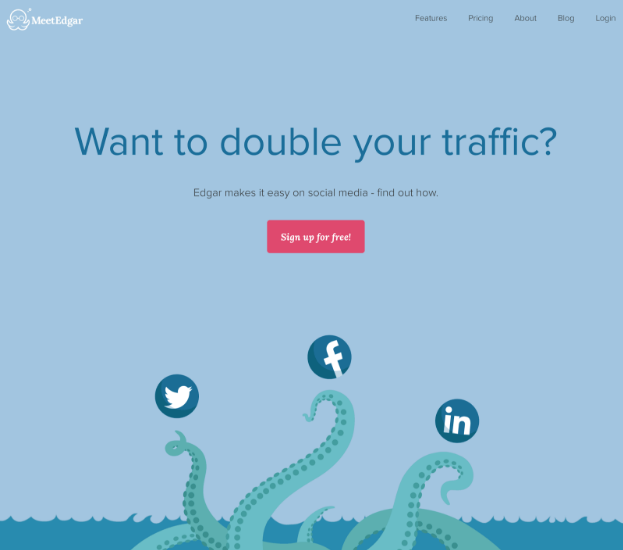Two of the most crucial aspects of running any business are reach and visibility. Without both, the shutters on your business won’t stay up for long. However, if there’s a bigger waste of time than misplaced outreach, we’ve yet to find it.
Your most critical consideration should always be your customers’ needs. By regularly letting them know you’re still in business (by sending emails, for example, or writing content about an upcoming event relevant to them), you’ll likely be their first port of call when they’re ready to buy.
In this post, we’ll look at a few ways to keep showing up right when the customer needs your services. Together, these strategies will get you off to a solid start at staying visible. Let’s get started!
Why “Showing Up” Is Key to Business Success
When we talk about “showing up,” we mean making sure customers think about your business, by communicating with them through whatever means you deem appropriate. If you’re offering the customer a constant reminder that you exist, they’re more likely to consider you whenever they have a need for a business in your niche. What’s more, depending on the communication channels you use (such as content marketing) you can increase your trust and niche authority.
However, there’s a fine line between constant, tasteful reminders and complete overexposure. What crosses this line is largely dependent on your business model, customer base, goals, and a myriad of other factors. Even so, this is something to keep in mind. For example, if your conversion rates haven’t improved after a while, or you’ve noticed a reduction in email subscriber numbers, you may be overdoing your communications and should consider cutting back.
How to Make Sure You’re the First Business Your Customers Think About (3 Reliable Methods)
It’s all very well to understand that you need to keep showing up for your customers, but achieving this is something else entirely. Let’s take a look at three methods that can help you reach your customers more consistently.
1. Automate Your Marketing

First up is a deceptively simple option: automated marketing. This is a semi-passive means of sending your digital communications. For example, if a customer has just purchased an item from your e-commerce store, you can have an email automatically sent to them. The email’s content could ask them to leave a review, or suggest a product relevant to their purchase history.
Automating your marketing can also encompass aspects such as scheduling your social media posts in advance – so there’s plenty of scope to get creative. You can use the various social media and marketing tools at your disposal to reach your customers, while putting in a minimum of legwork over the long term.
While you could get lost down this particular rabbit hole if you’re not careful, here are two smart ways to begin:
- Use your email marketing tools to set up automation. MailChimp and AWeber both have powerful solutions for this, and the former tool is completely free on its lowest tier.
- A simple tool such as Buffer might be all you need to automate your social media posts. Or, check out a more powerful option such as Meet Edgar.
To take things to the next level, you may want to use your newly automated marketing communications to reference real-world events your customers are already interested in. Let’s take a closer look at that strategy next.
2. Align Your Communications With Popular Events and Dates
There’s a whole world of potential customers out there, and producing content related to events, holidays, and other current topics is an easy way of getting their attention. Some businesses even become synonymous with a certain date or holiday, increasing their visibility (and doing wonders for their branding).
For brick and mortar businesses who also blog, local SEO—which focuses on local topics and events—is the newest way to get your business seen by potential customers. It’s easy to implement aspects of local SEO in your own marketing strategy, which is fortunate since providing a local viewpoint on your customers’ needs will likely net you additional profit. At the very least, you’ll be making inroads on your visibility in the nearby area.
It’s also smart to research popular events, dates, holidays, and anything else you can think of, to build up a list of potential communications opportunities. From there, pick out a few that align with your target demographic (and your business’ principles) and create content and marketing around them.
Finally, there’s one more method we’d like to recommend. If you’ve been following along so far, you’ll already be well on your way to implementing it.
3. Reach Your Customers Through Multiple Channels
This third method focuses on the overall strategy of consistently showing up. This means using multiple methods to reach your customers, rather than just one or two – including both online and offline communications. This gives you the maximum number of opportunities to connect with potential customers. Since you’re using many delivery methods, you won’t need to research each individual customer’s preferred outlet. What’s more, you’ll look like the hero when the customer needs your services and finds you through just the right channel.
To implement this method, simply consider every avenue your target customers use to get information, and plan to target as many of them as possible. Alternatively, you could strategically pick the few most likely candidates (depending on your available time and budget). For example, you could send out a sponsored tweet or Facebook ad to get leads, then release a follow-up email a few days later.
If you have a database of addresses, you can send regular holiday cards or gifts, business cards, and all manner of physical marketing materials. You don’t have to only use classic, direct-delivery communication lines either. Sponsoring events relevant to your target customers will also help increase your visibility.
Regardless of how you choose to target customers, we recommend using a staggered approach and spreading your communications out over a long period of time, to avoid annoying the recipients. For example, you could initially send out a business card, then follow up with an email to only those who respond. From there, you could send a holiday card or flyer promoting your upcoming sponsored event.
As you can see, the sky’s the limit with how you approach this method. The more creative and varied your communications are, the more likely you are to be at the forefront of your customers’ minds right when they need you.
Conclusion
Without focused, concerted effort to increase your reach and visibility, your business can easily stagnate. The path to progression and growth is through a common-sense approach to being wherever your customers are, at the right time to catch their attention.
In this article, we’ve shown you how to almost guarantee you’re the first business potential customers think about when they need your services. Let’s recap our three methods quickly:
- Automate your email and social media marketing.
- Produce communications that align with popular events and dates relevant to your customers.
- Use multiple channels and media (the more creative, the better) to reach your customers.
Do you have any questions about how to increase your business’ reach and visibility? Let us know in the comments section below!
